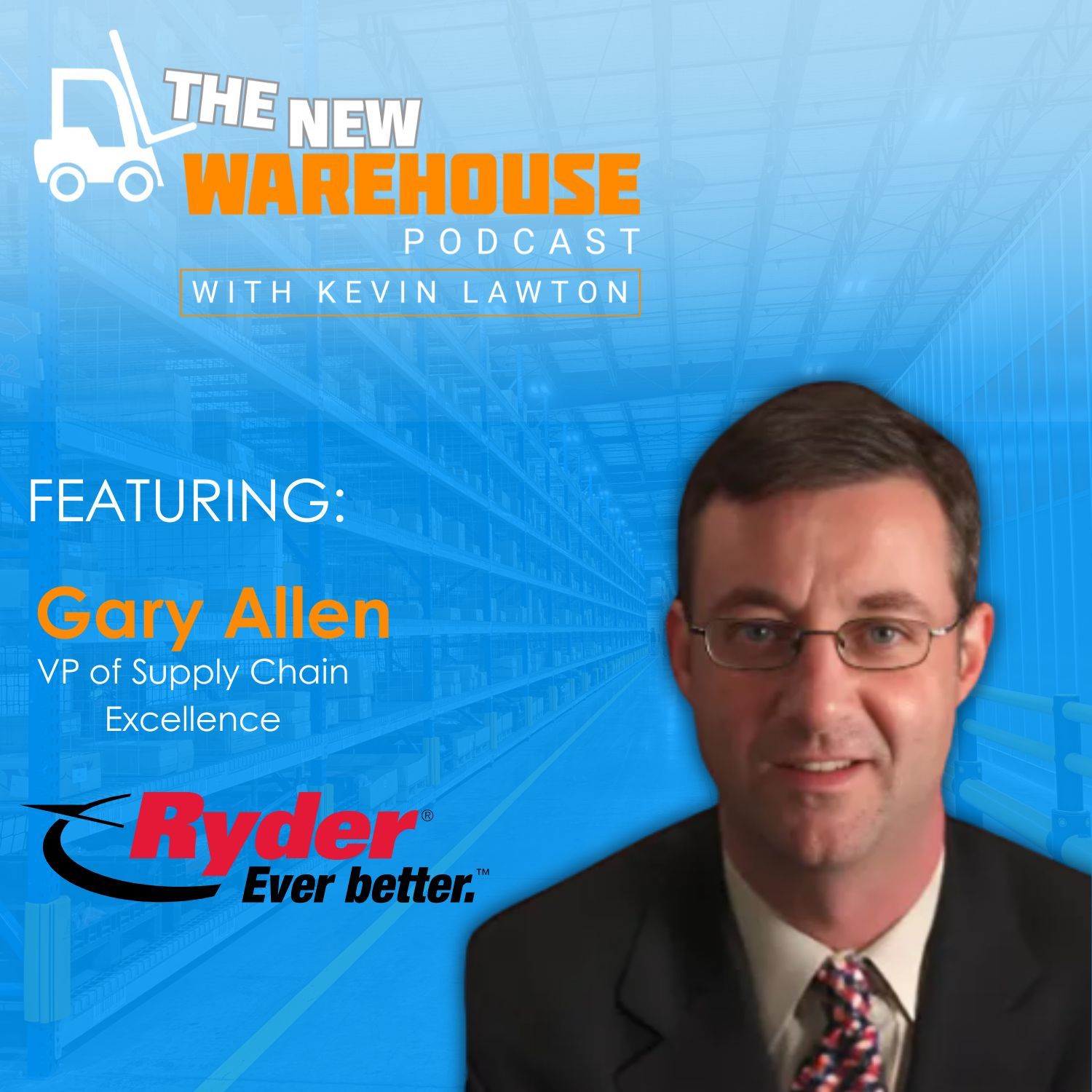
590: Warehouse Innovations with Ryder
Continuing the annual Manifest tradition, Kevin chats with Gary Allen, Vice President of Supply Chain Excellence at Ryder. With over 35 years in the industry, Gary brings a deep perspective on how warehouse operations have transformed from the early days of manual processes to today’s AI-driven, analytics-optimized environments. Ryder, widely known for its fleet, is also the second-largest warehouse provider in North America. In this episode, Gary shares how Ryder embraces data, automation, and flexible workforce solutions to enhance warehouse performance and employee satisfaction. The discussion offers valuable insights into the evolving nature of warehouse innovations, labor planning, and the role of predictive analytics in shaping the future.
Ryder’s Expansive Reach and Evolving Identity
While many still associate Ryder with rental trucks, Gary clarifies that the company has grown far beyond that. He notes, “We are the second largest warehouse provider in the US or North America. Not too many people know that—we’re right behind DHL.” With over 300 warehouses and 15,000 drivers, Ryder now manages more than 100 million square feet of warehouse space. “Our supply chain division is about 60% of our revenue,” adds Gary.
Gary emphasizes that the company’s evolution includes multiple verticals, including healthcare, e-commerce, and manufacturing partnerships. As he puts it, “We’re more than just trucks. We like our warehouses, too.” This holistic approach allows Ryder to deliver a full spectrum of services, ranging from transportation to warehousing and last-mile delivery, tailored to the needs of diverse industries.
Automation Isn’t Enough—The Real Power Is in Data
Ryder embraces warehouse innovation with robotics like ASRS, AMRs, and autonomous forklifts, but Gary believes the differentiator lies elsewhere. “The physical side of robotics is a bit of a commodity,” he explains. “The secret sauce is around the data analytics, the software, the computer vision.”
At one nearly lights-out facility in Canada, Ryder runs four layers of automation, but the real achievement is integrating those technologies with unified data systems. “We made a strategic decision that we need to own the data… to standardize it to be able to do anything with it,” Gary explains. This unified data strategy allows Ryder to analyze performance, optimize workflows, and proactively address issues before they impact customers.
He continues, “It’s become a data-driven world… and it’s how we push information to customers before problems occur.” This philosophy enhances customer service and strengthens Ryder’s ability to deliver predictive analytics, labor forecasting, and scenario planning—tools that have become essential in a complex and rapidly evolving logistics environment.
Designing a Workforce Strategy for the Next Generation
Beyond technology, Ryder focuses on building an innovative warehouse environment that engages employees and reduces turnover. One of their most significant warehouse innovations in this space is the RyderShift platform. According to Gary, “What we found is they really liked the communication and the flexibility aspect of it.” The app-based system lets workers swap shifts, report absences, and stay connected in real time—all without needing to call a manager.
Rather than replacing employees with automation, Gary believes in repositioning them. “It’s just changing the role to more value-added services, which we find is more attractive… our employees want to do more complicated functions,” he says. As automation expands, entry-level warehouse jobs will shift away from repetitive tasks to more engaging roles, like managing robotics, supporting pre-assembly, or participating in digital workflows.
“It’s not just technology, it’s how we use data to drive continuous improvement and deliver value,” Gary adds, reiterating that tech should elevate people, not sideline them. He envisions a future where workers act as robot wranglers and humanoid collaborators, doing more meaningful work alongside increasingly intelligent machines.
Key Takeaways on Ryder’s Warehouse Innovations
- Ryder manages 300+ warehouses and over 100M square feet, making it the second-largest warehouse provider in North America.
- A unified data strategy enables Ryder to operate lights-out facilities and offer predictive, AI-driven solutions.
- Tools like RyderShift boost employee retention through flexible scheduling and real-time communication.
Listen to the episode below and leave your thoughts in the comments.
Guest Information
For more information on Ryder’s third-party logistics solutions, click here.
To connect with Gary on LinkedIn, click here.
For more information about warehouse innovations, check out the podcasts below.
549: Candor Food Chain—The Coolest Innovation in Logistics
529: GEODIS’ Strategic Approach to Warehouse Innovation
496: Talking Innovation with Brett Wood of Toyota Material Handling
